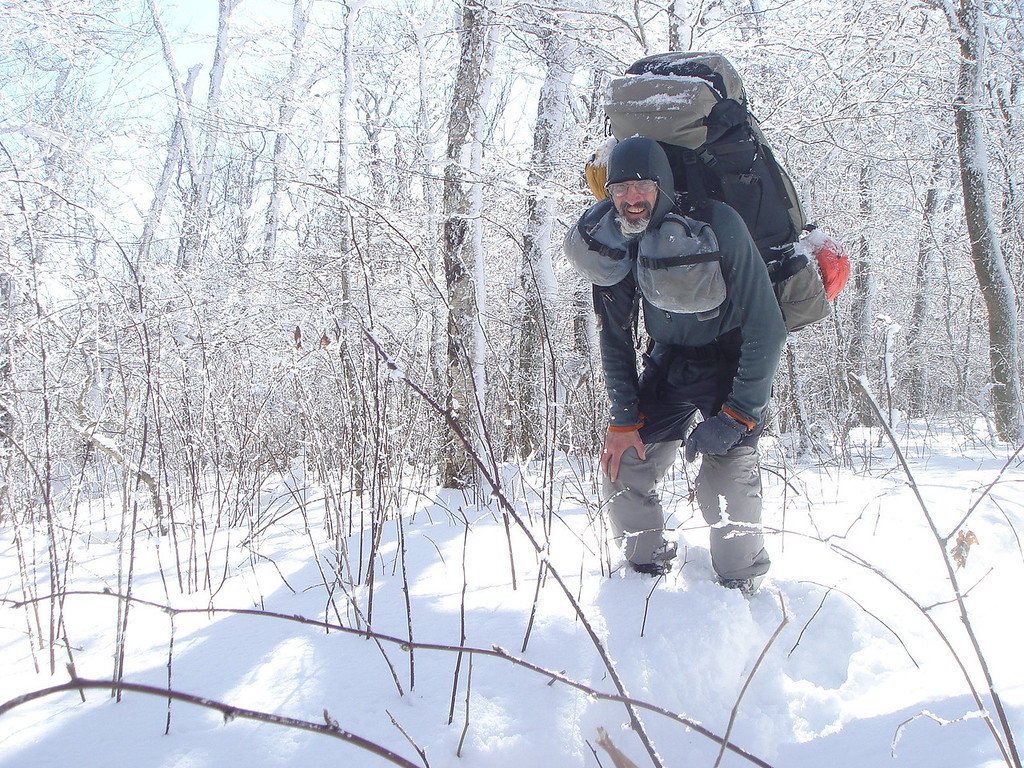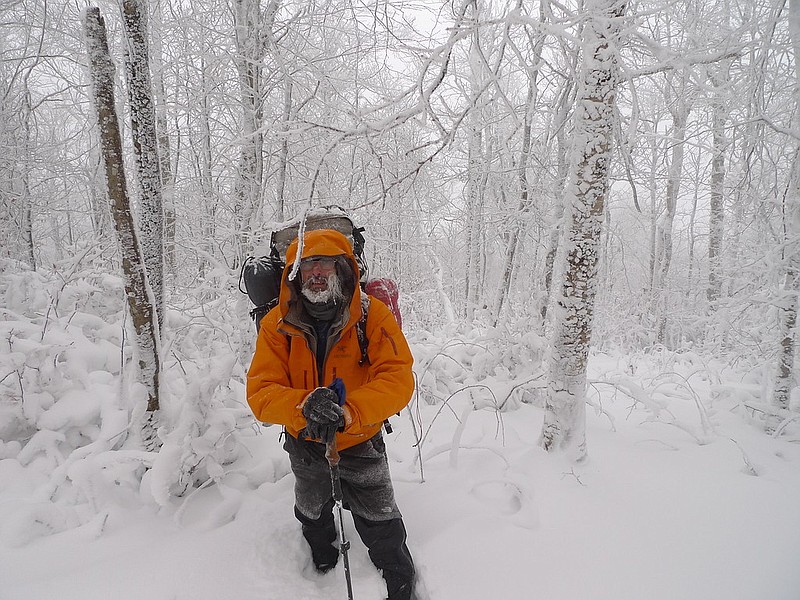One can wonder why backpackers do what they do. After all, they go to a lot of trouble, and sometimes expense, to find a place where they can sleep between two trees or lie on the ground.
And winter backpacking, of course, adds more challenges - at least one of which is just how much a backpack can be stuffed. A thicker sleeping bag and additional clothes for cold temps take space away from other essentials and quickly add weight.
There is a saying that the lighter the backpack, the lighter the wallet.
For example, Katie Hinkle of Rock/Creek says their lowest-temperature rated sleeping bag in stock is rated for 15 degrees and comes with a price tag of $399. However, if one is looking for a bag rated at minus-40, be prepared to pay around $1,000.
So why do winter backpackers do what they do? Here, local hikers and specialists share their reasons, as well as tips for staying safe.
***
The coldest nights
Walter "Tipi" Wehner of Tellico Plains, Tennessee, is a year-round backpacker known for his extended backpacking trips - usually around 20 days at a time. Wehner's latest backpacking trip was 27 days through the Cherokee and Nantahala National Forests. His food and fuel alone weighed in at 65 pounds, making his total backpack weight 110 pounds.
As to his coldest backpacking experience, "In 1985 I was backpacking around Boone, North Carolina. I was actually living out of my backpack around the town, and in January 1985 it was 30-below. It was bad, the worst I have ever seen."
Over the 20 years that Wehner has been backpacking throughout the Southeastern U.S., he has encountered several nights when the temperature has been below zero. From those chilly nights, he learned to always "get the best gear you can buy, and if you're going to backpack in cold weather, always buy a sleeping bag rated for below zero [temperatures]." Moreover, he says, "hot hand warmers are always great to have."
***
The 10 essentials all backpackers should carry:
1. Map
2. Compass
3. Sunglasses and sunscreen
4. Extra clothing
5. Headlamp or flashlight
6. First-aid supplies
7. Firestarter
8. Matches
9. Knife
10. Extra food
***
8 hazards to avoid in cold weather backpacking:
Richard Harris, well-known for his backpacking experience, is a retired doctor who lives in Tellico Plains and says he see hikers falling trap to a common set of hazards. Here's what to watch out for:
1. Getting wet in a wind that leads to hypothermia.
2. Not drinking enough water because it is cool and you don't feel thirsty.
3. Getting lost in a snowy area when you can't tell what is trail and what isn't.
4. Slipping on ice, snow or mud or falling into a creek or river.
5. Not carrying enough warm gear and extra food should you get lost, hurt or stranded.
6. Not carrying the 10 essentials as well as a space blanket, extra food and a way to start a fire on day hikes.
7. Not telling people where you are going and when you expect to return.
8. Not carrying an InReach or Spot satellite transmitter.
***
 Carrying his heavy backpack, Walter "Tipi" Wehner makes his way through deep snow in Cherokee National Forest. Due to the deep snow, Wehner also had to carry his dog's backpack around his neck. At times, the backpacker encountered waist-deep snow, making what normally would be a 40-minute hike into a three-hour trek. / Photo by Walter "Tipi" Wehner
Carrying his heavy backpack, Walter "Tipi" Wehner makes his way through deep snow in Cherokee National Forest. Due to the deep snow, Wehner also had to carry his dog's backpack around his neck. At times, the backpacker encountered waist-deep snow, making what normally would be a 40-minute hike into a three-hour trek. / Photo by Walter "Tipi" WehnerLearn to recognize the early stages frostbite
Dr. Laura Cleary, a dermatologist with Erlanger, says of frostbite, "The first signs include pallor of the skin and then worsening cyanosis (blue color to the skin). Then the skin can start to ulcerate and die, developing sores. Treatment includes getting to a warm environment, avoiding additional injuries and rewarming when possible."
***
Taking it to the extreme
There are those who take winter backpacking to the extreme. One such backpacker, Sean Emery, certainly meets that criteria. Emery, who lives near Ely, Minnesota, can be seen on his YouTube channel, Shugemery. He normally backpacks in the Superior National Forest in Minnesota. In one video he can be seen camping in minus-40-degree temperatures.
"I live in Minnesota and winter is long. It is either halt my backpacking locally or embrace winter. I chose to embrace," Emery explains.
On that particular trip, Emery suffered a small case of frostbite. Check out some of his survival tips at youtube.com/user/shugemery.
***
Why winter backpacking?
Kurt Emmanuele, a math specialist at Baylor School, also embraces winter camping. "I backpack all year," he says. Emmanuele has been backpacking for about 50 years starting when he was in Boy Scouts. Here, the teacher cites some additional reasons for backpacking in winter.
> The trails are less crowded.
> The humidity and heat are usually not an issue.
> The views are more open with fewer leaves on the trees.
> The waterfalls usually have more water than at other times of the year.
> One gets to see interesting ice formations to photograph.
> One gets plenty of sleep because it gets dark earlier.
> Trailside vegetation is reduced, so it is easier to navigate narrower paths.
> Rare snow scenes are always exhilarating to experience.
